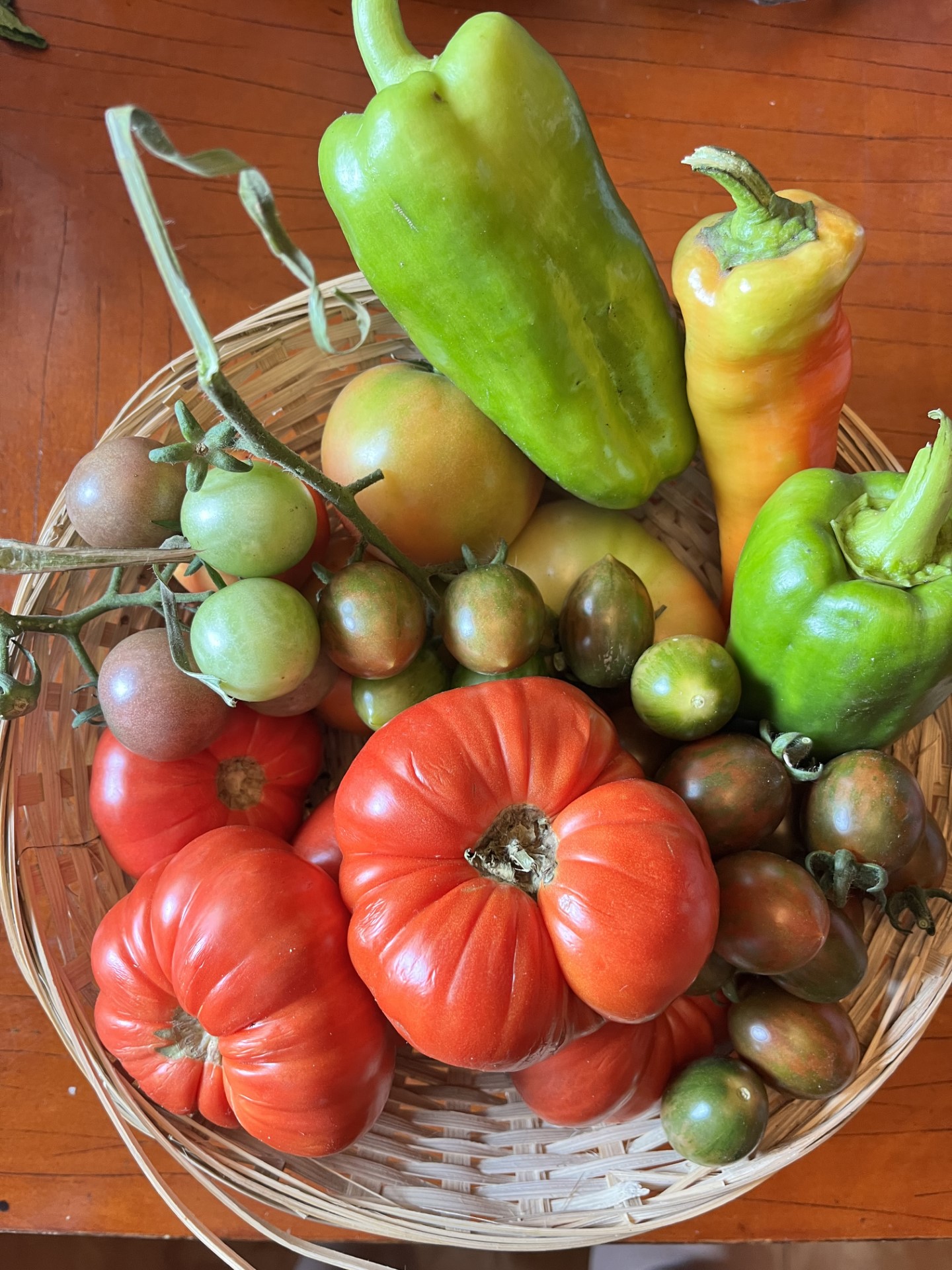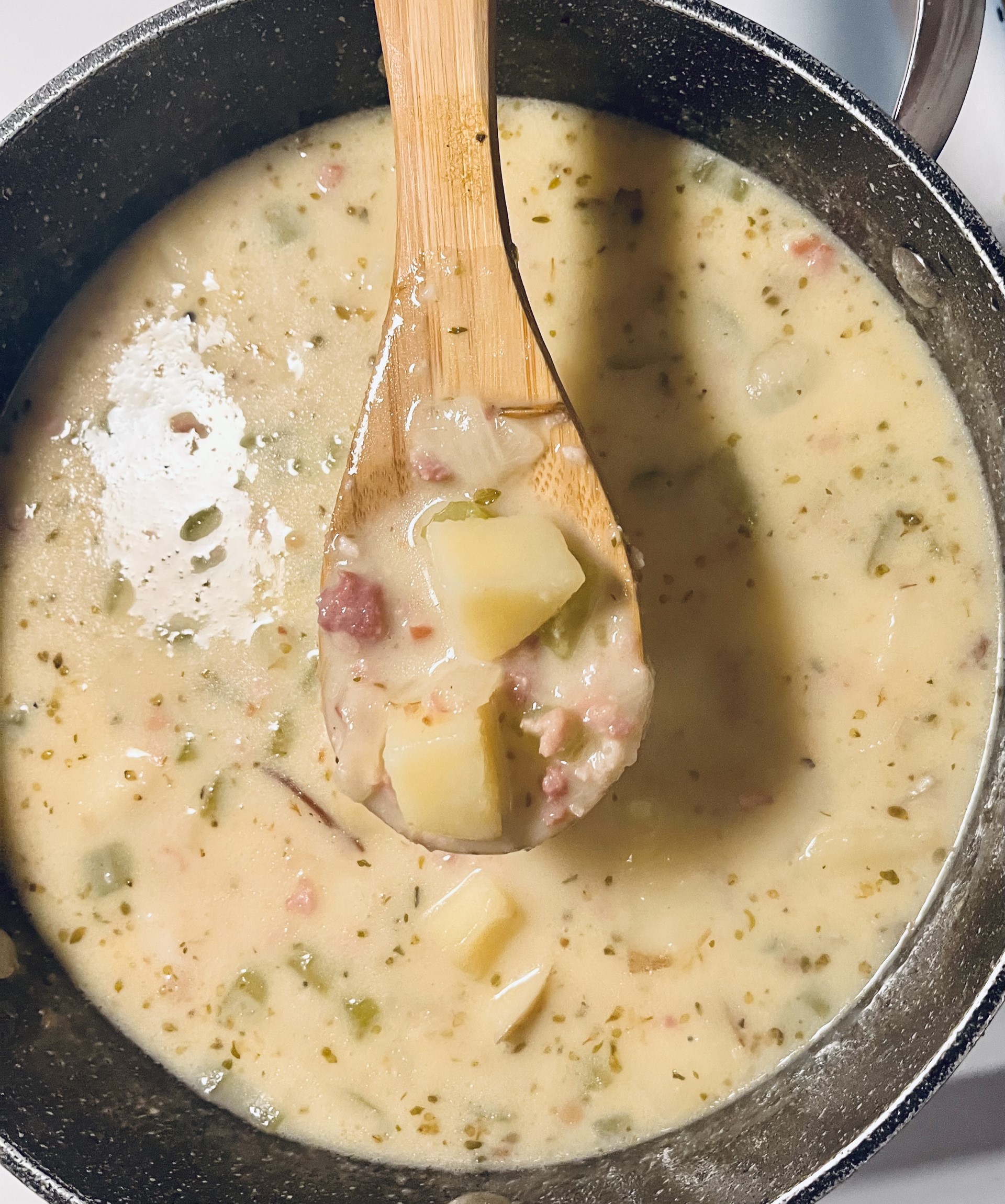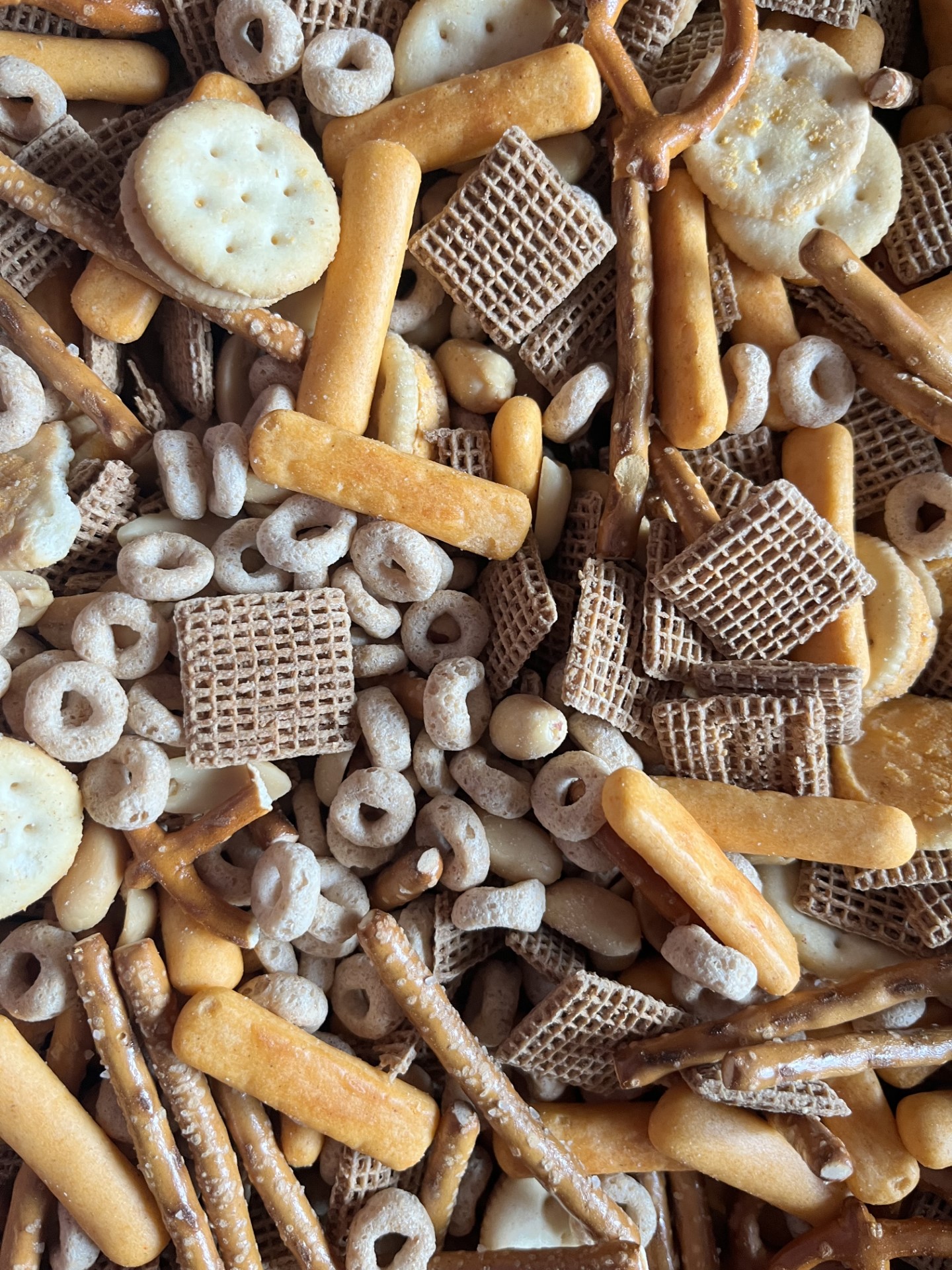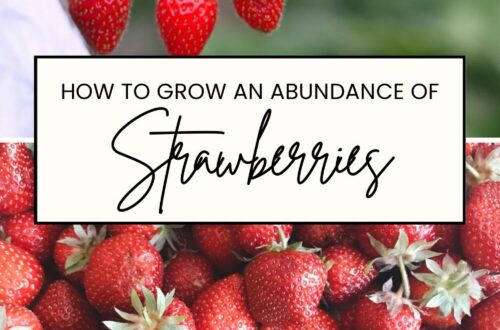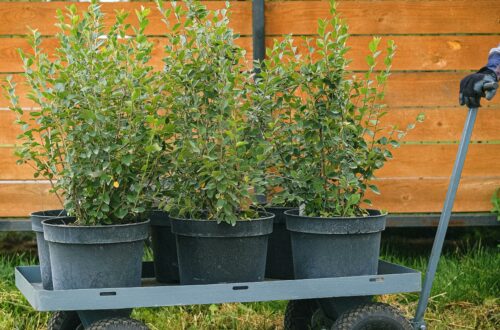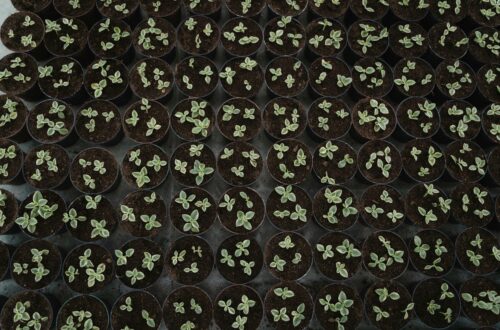*This post may contain affiliate links. This means that any purchase made through a link on this page will provide us with compensation to help keep this website running at no extra cost to you. See affiliate disclosure here*
There’s something so therapeutic about sticking a seed in the ground and watching it transform into a living, breathing entity. To then harvest it and turn it into food and resources for yourself and your family is undeniably one of the best feelings in the world. Gardening is incredibly easy once you have a few seasons under your belt. Below are the easiest plants to grow for a beginner garden!
For me, my garden is not only a resource for my family and me; it’s also a stress relief. Forget meditation apps; go pluck weeds and water your growing plants. There’s this zen-like calmness when I’m surrounded by plants. I don’t think I could ever live in a world where I couldn’t plant a garden. Some days I feel like everyone should be out there planting gardens, but we’re all different and have different hobbies, I guess. Really, though, who wouldn’t want to have a mini-produce section right outside their door for a fraction of the cost of a grocery store?!
But here’s the real deal – it’s not just about ‘planting a garden.’ It’s about connecting with nature and growing your own little ecosystem. You become buddies with bees, your tomatoes’ biggest supporter, and suddenly, you’re part of this whole ecosystem that’s been doing its thing long before you showed up. So, why garden? Because it’s good for your mental and physical health, you can save money, feed yourself and your family real organic food, and it makes you a card-carrying member of Team Earth. It’s not a hobby; it’s a lifestyle, and it’s pretty darn awesome. Do I sound like a nerd yet? Maybe an old lady?
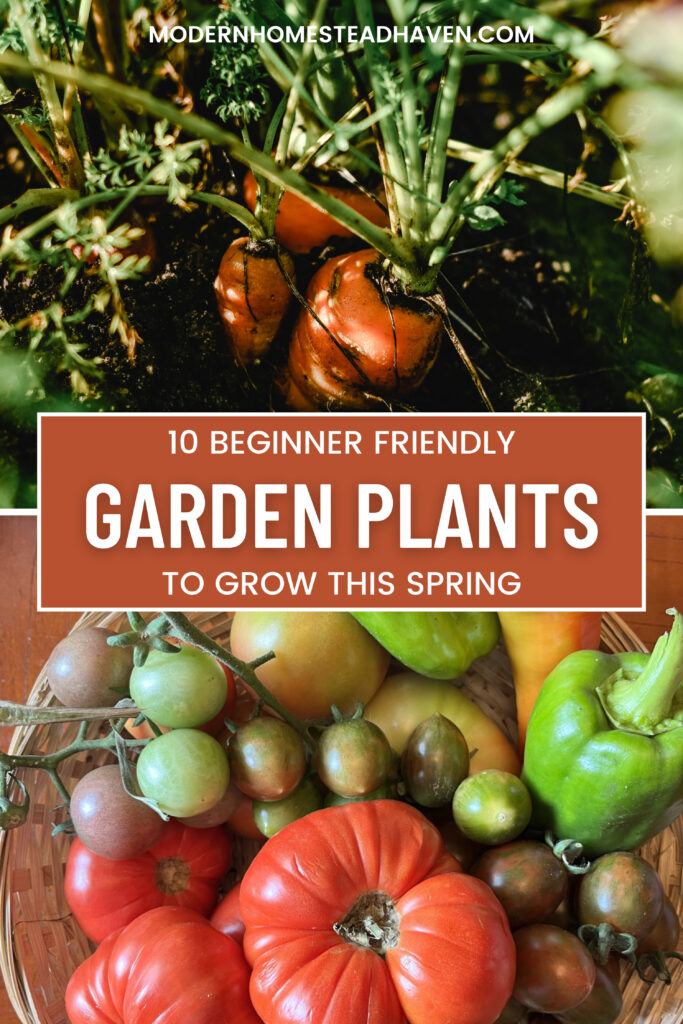
A great garden starts with the seed. Always make sure you research quality seeds. Seeds Now offers a huge range of diverse, quality seeds at a great price.
#1 LETTUCE
Lettuce is like the Usain Bolt of the veggie world. It sprouts up faster than you can say “salad,” which means you get that satisfying “I grew this” feeling in record time. Lettuce can be grown directly in the ground, in pots, or even indoors near a windowsill. Lettuce is fairly low maintenance, so it’s perfect for beginners! Sow seeds directly in the garden according to package directions after the danger of frost has passed.
#2 ONIONS
Growing onions is pretty straightforward. Buy the ‘onion bulbs’ in the spring, stick them in the ground about 5-6 inches apart, water them, and watch them sprout! Onions can also be grown from seed, but I prefer the bulbs; they’re inexpensive and you just plop them right in the ground. These resilient and low-maintenance vegetables thrive in a variety of climates and soil conditions, making them one of the easiest crops to cultivate. They require well-drained soil, ample sunlight, and regular watering. One of the key advantages is their ability to withstand pest pressures and diseases, reducing the need for extensive care. As they mature, their green tops can be harvested for a continuous supply of fresh green onions, while the bulbs can be left in the ground until fully developed. Plus, if stored correctly, they will remain fresh for months into the winter!
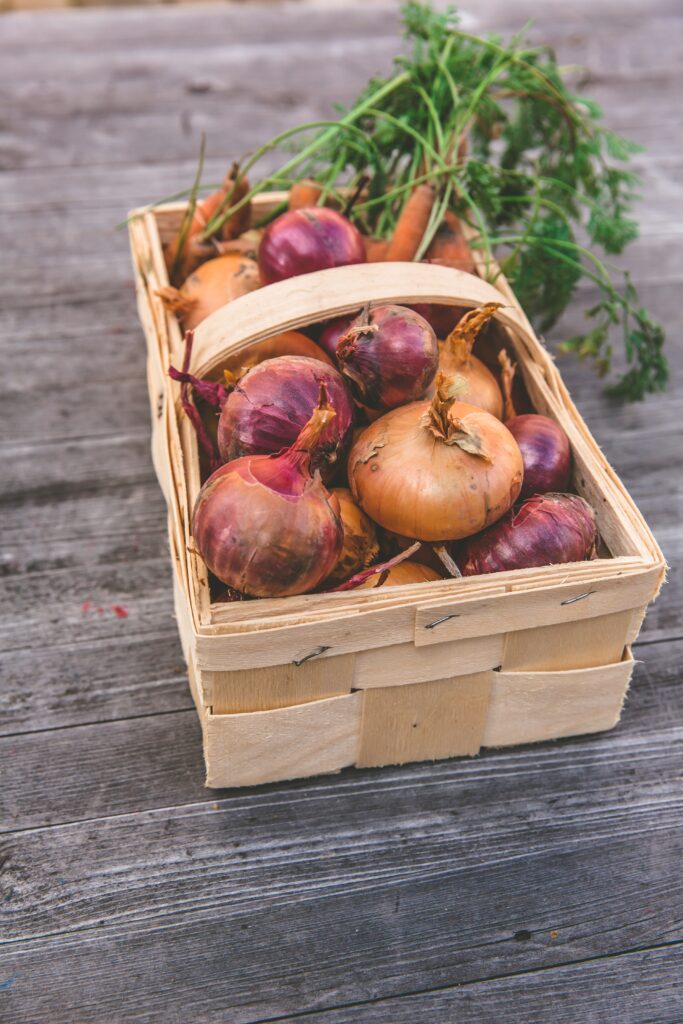
#3 ZUCCHINI
I remember way back when I started my first solo garden, I planted a whole 50-foot row of zucchini. What a mistake that was hahah. With Zucchini, a few plants go a long way. I’d recommend 2-3 for a beginner gardener. Growing zucchini is like having a green thumb cheat code – it’s that easy! Seriously, even if you’ve never grown anything before, zucchinis are the perfect starting point. Just give them a sunny spot, some well-draining soil, and they’re good to go. You can either start them from seeds or grab some seedlings from the nursery; they’re not picky. But, plopping the seeds right into the garden is the easiest way to go! Water them, and boom – you’ll have zucchinis popping up like it’s their favorite party trick. The best part? Zucchinis are prolific producers, so get ready for a summer of harvesting these green beauties for salads, stir-fries, and maybe even some sneaky zucchini baking.
#4 CUCUMBERS
Everyone loves cucumbers, right? I love fresh cucumber sandwiches and making my famous dilly pickles. I grow quite a large number of cucumbers in my own garden, but if you’re just starting out… 2-3 plants will be plenty! These vegetables are well-suited for gardeners seeking a relatively low-maintenance addition to their crops. Selecting an adequately sunny location and preparing well-drained soil form the foundation of successful cucumber cultivation. Employing a trellis system or allowing them to sprawl both prove effective, offering flexibility in garden planning. Cucumbers are prolific producers; one can expect a bountiful harvest. Grab a pair of gloves because these guys can be prickly. Check out my in-depth post about growing cucumbers here.
#5 SUGAR SNAP PEAS
Growing sugar snap peas is like bringing a little piece of the farmer’s market to your backyard without breaking a sweat. Find them a spot with plenty of sun, give them some well-draining soil, and you’re pretty much set. These guys grow very well from seed, no use for starting them indoors. Peas don’t like to have ‘wet feet,’ so ensure the spot that they are placed isn’t prone to flooding or consistently wet soils. The cool thing is that sugar snap peas are climbers, so toss in a trellis, and they’ll happily do their thing, which saves space, too! Harvesting is always my favorite part – pluck the pods straight off the vine and munch away. You can add them to stir-fries, salads, and soups too! Peas are always a rewarding process.
#6 PEPPERS
Peppers are a seed to start indoors, but its so easy. See my other post about top plants to start indoors. Once you have the transplant in the ground (a good 12-20 inches apart) water them quite frequently and they’ll grow like crazy. Peppers are perfect for snacking, adding into stir-fries, salad, soups or anything your heart desires. I freeze a bunch to add to meals throughout the winter, I pickle some, and I make quite a bit of relish and salsa. Peppers don’t store for too long throughout the winter so it’s a good idea to look into ways to preserve your pepper harvest.
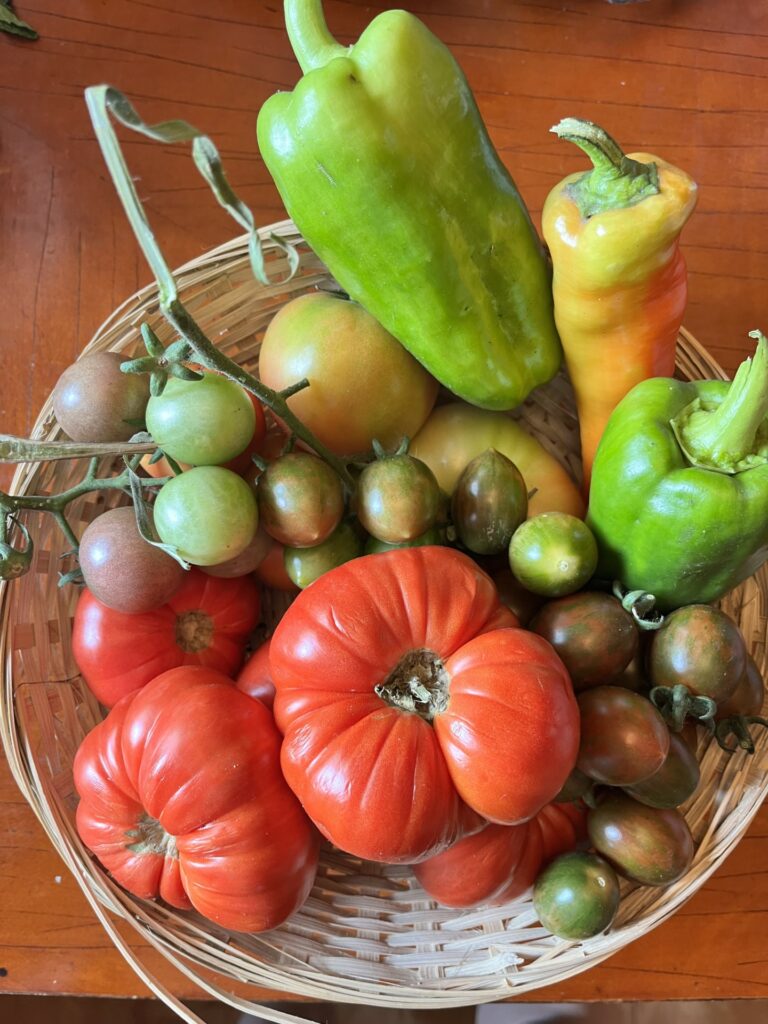
#7 TOMATOES
Growing tomatoes in your garden can be a satisfying and relatively straightforward endeavor. Tomatoes are recommended to start indoors and then transplanted into the garden after the danger of frost has passed. You’ll need to choose a sunny location with well-draining soil, as tomatoes thrive in sunlight and prefer to not sit in moisture 24/7. If the leaves on your tomato plant look wilted, it’s likely just thirsty! Proper spacing between plants promotes air circulation and helps prevent diseases. Providing consistent and deep watering, especially during the fruit set. It is also a good idea to support the tomatoes with stakes or cages as they mature. Regular pruning of excess foliage encourages better air circulation and redirects energy toward fruit production. With proper care and attention, your garden can yield a bountiful harvest of flavorful tomatoes, versatile for salads, sauces, and countless canning creations.
#8 CORN
Corn thrives in full sunlight and prefers soil that retains moisture without becoming waterlogged. Corn is a heavy feeder, so enrich the soil with compost or well-rotted manure before planting; this is optional as I’ve planted them with no fertilizer and my corn is always bountiful! Consider planting in blocks rather than single rows to promote pollination, as corn is wind-pollinated. Proper spacing between plants is essential to prevent competition for nutrients. Plant corn seeds directly in the soil after the danger of frost has passed, as they prefer warm temperatures for germination. Provide consistent watering throughout the growing season, especially during the tasseling and silking stages. Harvest corn when the kernels are plump and milky by hand-twisting the ears. With attention to these details, your garden can yield a delicious harvest of sweet and crisp corn on the cob.

#9 GREEN/YELLOW BEANS
Beans are a plant that I can neglect and they still thrive, haha. Bush beans are also very heavy producers so you don’t need many plants. If you are growing a bush bean variety, ensure proper spacing according to the package to promote airflow and prevent disease. Beans are natural nitrogen fixers so they are super beneficial to the soil as well. Beans freeze fairly well for over the winter storage, plus you can pickle some, too!
#10 CARROTS
Growing carrots is pretty straightforward. Though there have been some years that I plant rows that pop up patchy, and I have yet to figure out why. I’m thinking that I had a bad seed batch, but who knows. I get my carrot seeds either from Vesey Seeds or T & T Seeds now and they haven’t given me any issues yet! Try to plant your carrot seeds in an area without too many large rocks in the soil – rocky soil can result in deformed and stunted carrots. Carrots do tend to take their sweet time popping out of the ground, so don’t get discouraged if you don’t see any action in the first week or two. Once carrots are established, it’s a good idea to thin them out to promote healthy, thick carrots.
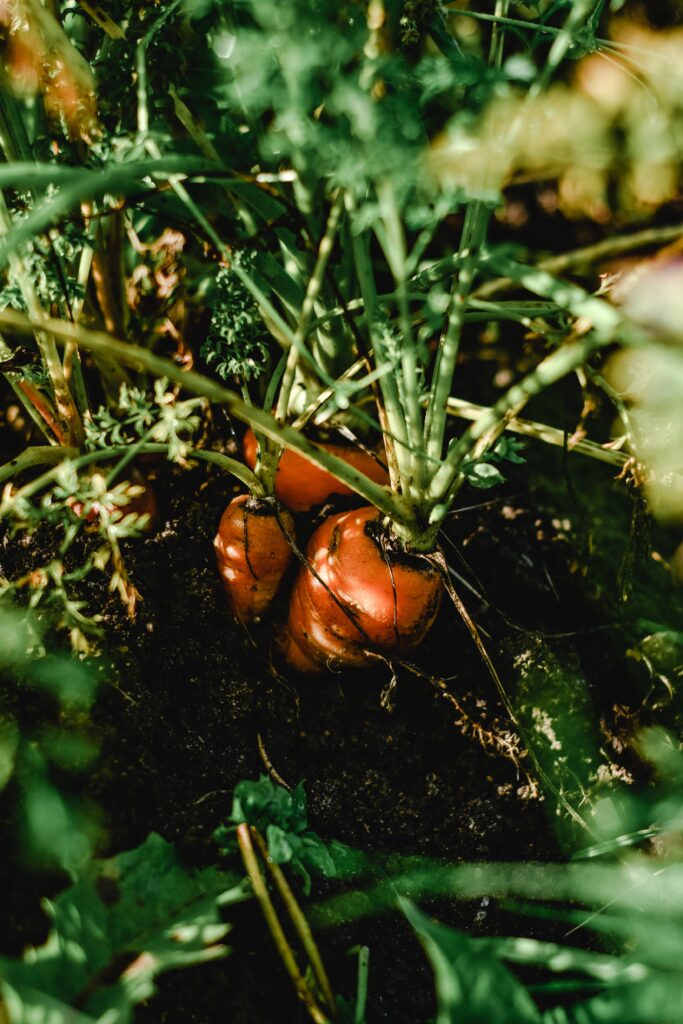
Growing a garden is truly soul-healing – so don’t take it too seriously. If something doesn’t grow, just try again. I want everyone to know the feeling of a bountiful garden harvest that then turns into a beautiful meal on the table. Happy Growing!
